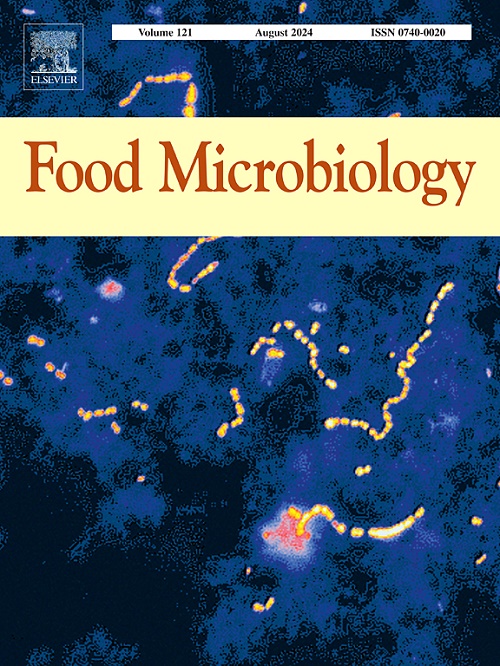Source attribution studies of foodborne pathogens, 2010–2023: a review and collection of estimates
IF 4.5
1区 农林科学
Q1 BIOTECHNOLOGY & APPLIED MICROBIOLOGY
引用次数: 0
Abstract
Identifying the most important sources and transmission routes of foodborne pathogens is crucial for developing food safety strategies at both national and regional levels. Various source attribution approaches and methods have been applied worldwide. This review aims to provide an overview of available studies that estimate the attribution of foodborne illnesses globally, regionally, and nationally, compiled by pathogen and region. We conducted a search in PubMed to identify peer-reviewed source attribution studies of one or more foodborne pathogens published from January 2010 to July 2023. Additionally, we consulted experts of the Foodborne Disease Burden Epidemiology Reference Group (FERG) for 2021–2025 and screened reference lists of included articles to identify further relevant studies. The extracted studies were categorized by pathogen, source attribution method, country, and region. We identified 62 studies published during the specified period, covering 34 pathogens across 26 countries, and extracted source attribution estimates. The most frequently studied pathogens were Salmonella, Campylobacter, and Escherichia coli. The methods most used were microbial subtyping, outbreak analysis, and mixed methods. Extracted data show substantial variation in results across methods and countries, highlighting the challenges of reaching a consensus on the relative contributions of foodborne disease sources at both regional and global levels based on empirical data. All extracted estimates are available in supplementary materials.
2010-2023年食源性致病菌来源归因研究:评估和估计数据收集
确定食源性病原体的最重要来源和传播途径对于制定国家和区域一级的食品安全战略至关重要。在世界范围内应用了各种来源归属方法和方法。本综述旨在提供现有研究的概述,这些研究估计了全球、区域和国家食源性疾病的归因,并按病原体和地区汇编。我们在PubMed检索了2010年1月至2023年7月发表的一种或多种食源性病原体的同行评议来源归因研究。此外,我们咨询了2021-2025年食源性疾病负担流行病学参考小组(FERG)的专家,并筛选了纳入的参考文献列表,以确定进一步的相关研究。提取的研究按病原、来源归属方法、国家和地区进行分类。我们确定了在指定期间发表的62项研究,涵盖了26个国家的34种病原体,并提取了来源归因估计。最常见的病原体是沙门氏菌、弯曲杆菌和大肠杆菌。最常用的方法是微生物分型、爆发分析和混合方法。提取的数据显示,不同方法和国家的结果存在很大差异,突出了根据经验数据在区域和全球层面就食源性疾病来源的相对贡献达成共识的挑战。所有提取的估计数都在补充材料中提供。
本文章由计算机程序翻译,如有差异,请以英文原文为准。
求助全文
约1分钟内获得全文
求助全文
来源期刊

Food microbiology
工程技术-生物工程与应用微生物
CiteScore
11.30
自引率
3.80%
发文量
179
审稿时长
44 days
期刊介绍:
Food Microbiology publishes original research articles, short communications, review papers, letters, news items and book reviews dealing with all aspects of the microbiology of foods. The editors aim to publish manuscripts of the highest quality which are both relevant and applicable to the broad field covered by the journal. Studies must be novel, have a clear connection to food microbiology, and be of general interest to the international community of food microbiologists. The editors make every effort to ensure rapid and fair reviews, resulting in timely publication of accepted manuscripts.
 求助内容:
求助内容: 应助结果提醒方式:
应助结果提醒方式:


